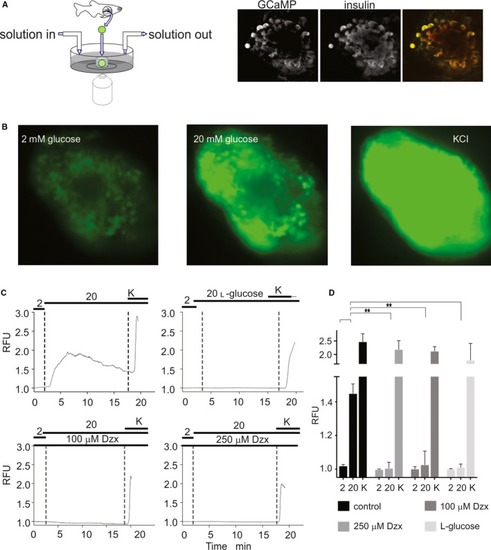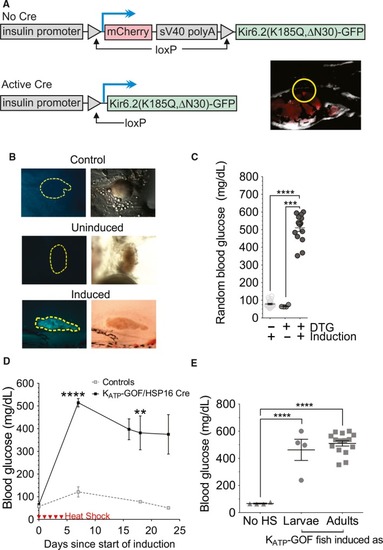- Title
-
Beta-cell excitability and excitability-driven diabetes in adult Zebrafish islets
- Authors
- Emfinger, C.H., L?rincz, R., Wang, Y., York, N.W., Singareddy, S.S., Ikle, J.M., Tryon, R.C., McClenaghan, C., Shyr, Z.A., Huang, Y., Reissaus, C.A., Meyer, D., Piston, D.W., Hyrc, K., Remedi, M.S., Nichols, C.G.
- Source
- Full text @ Physiol. Rep.

ZFIN is incorporating published figure images and captions as part of an ongoing project. Figures from some publications have not yet been curated, or are not available for display because of copyright restrictions. |
|
Intracellular [Ca2+] in adult islets is glucose‐sensitive. (A, left) Islets were imaged in microchambers (~4 |
|
Islet KATP‐GOF results in profound diabetes. (A) Transgenic strategy for conditional KATP‐GOF expression in zebrafish islet. mCherry, expressed under insulin promoter control (upper panel), is excised and KATP‐GOF construct is expressed, after (lower left panel) Cre recombination. A F2 larva is shown in the right lower panel, with the islet highlighted in the yellow circle. (B) GFP (left column) and bright‐field (right column) images of dissected islets from adult control, uninduced KATP‐GOF and induced KATP‐GOF fish (images taken at 12 × ). (C) Random blood glucose levels in controls ( |


